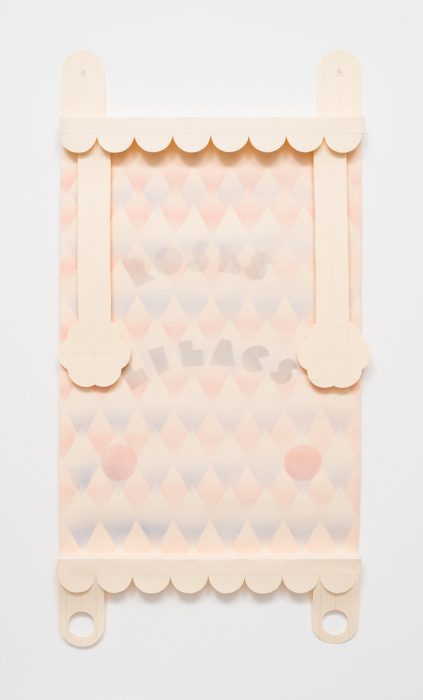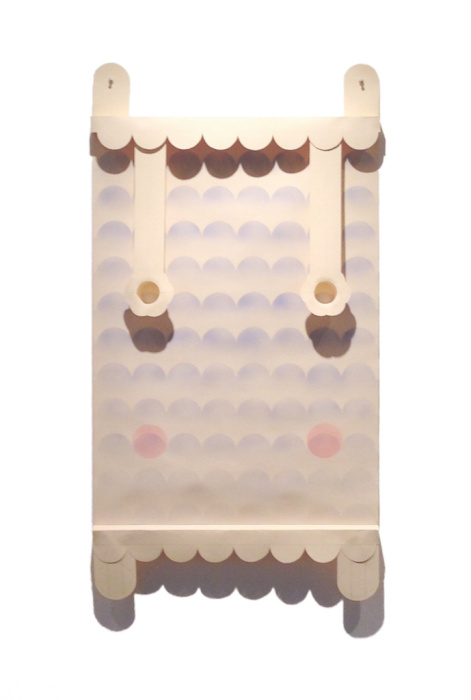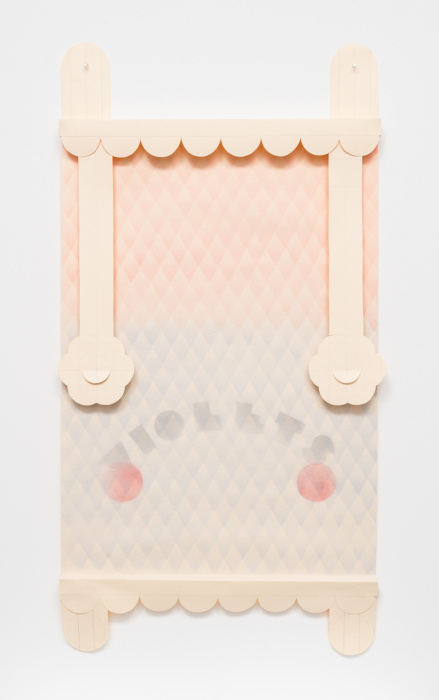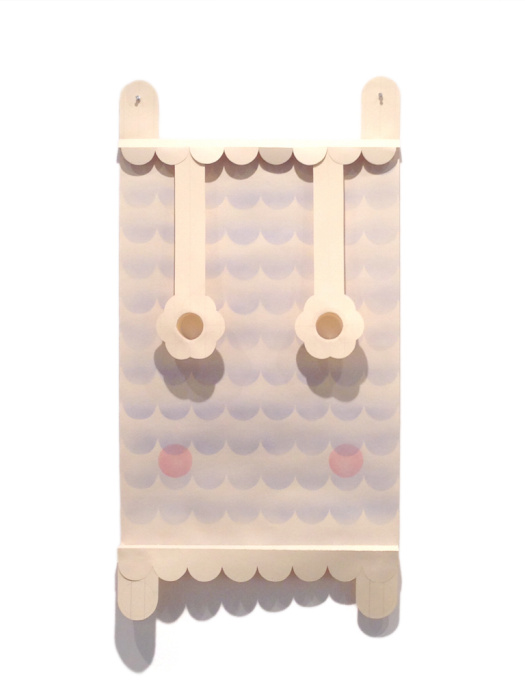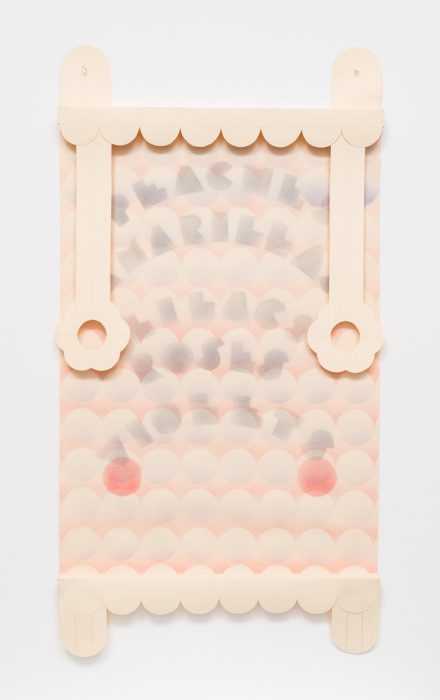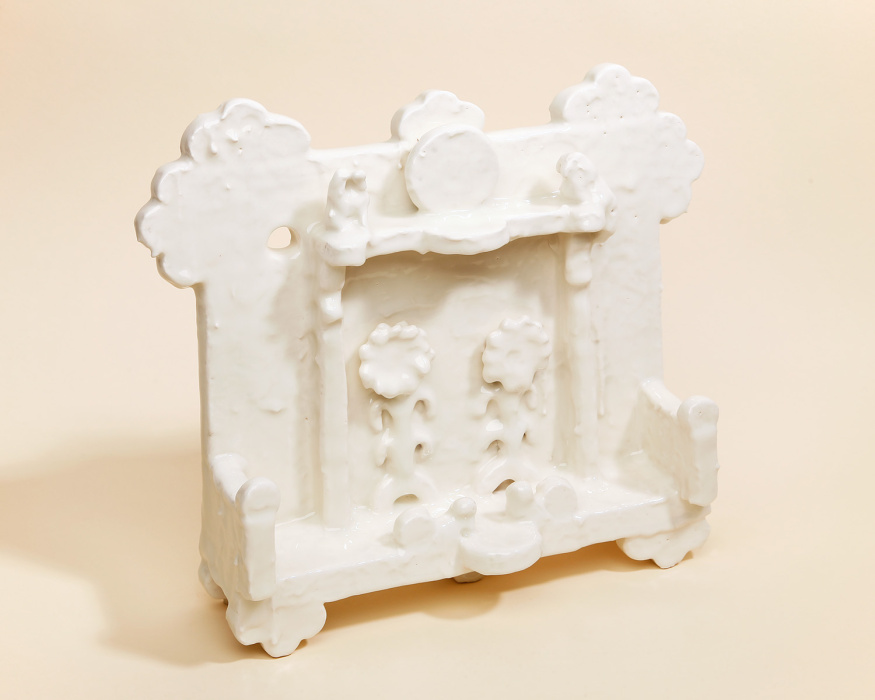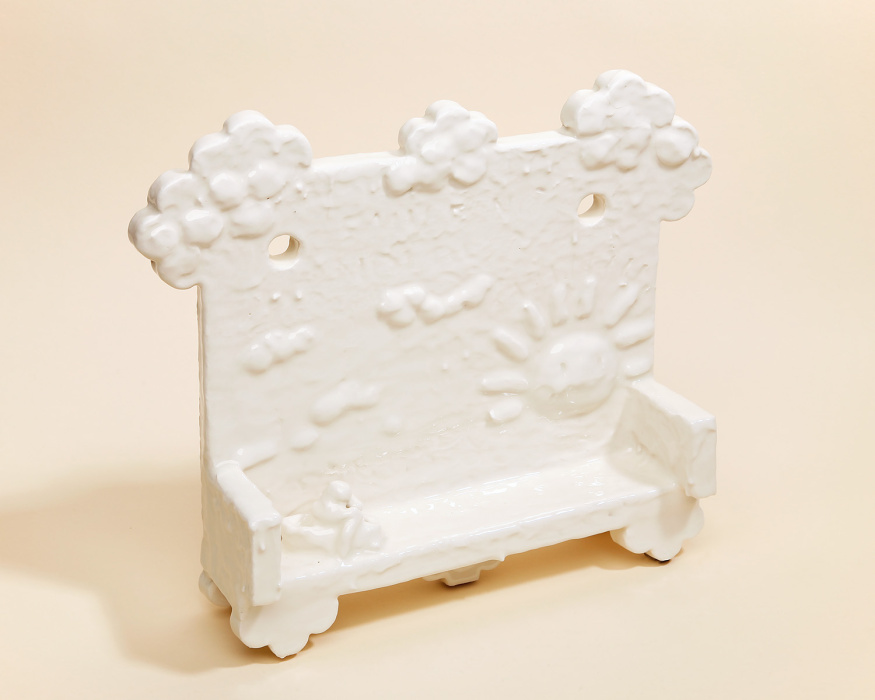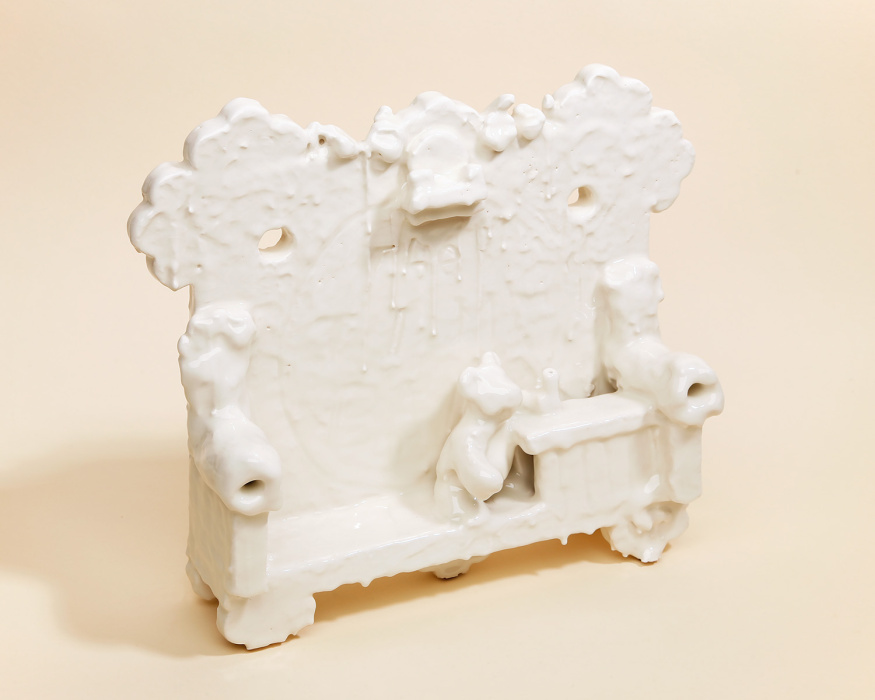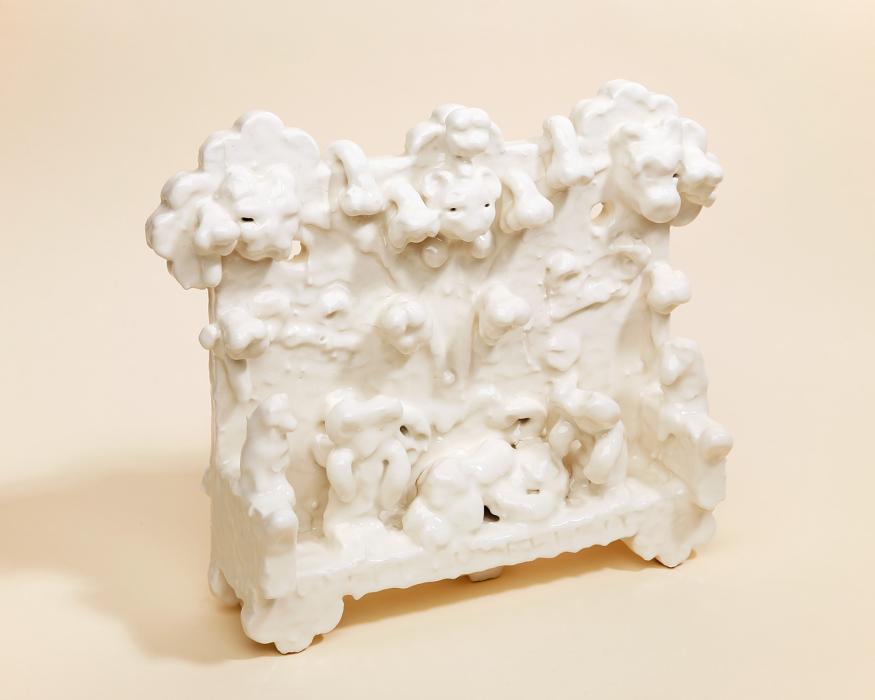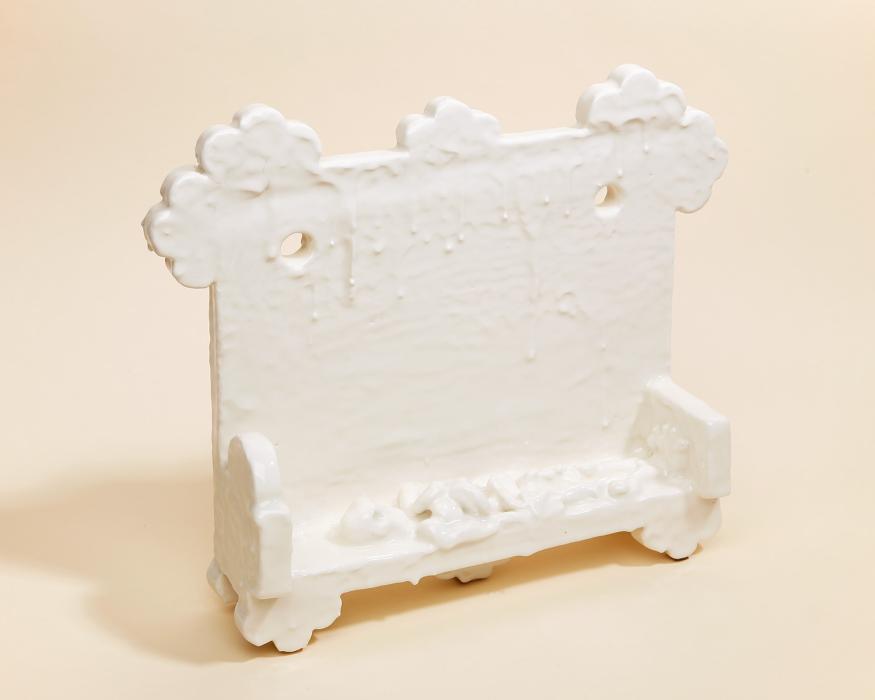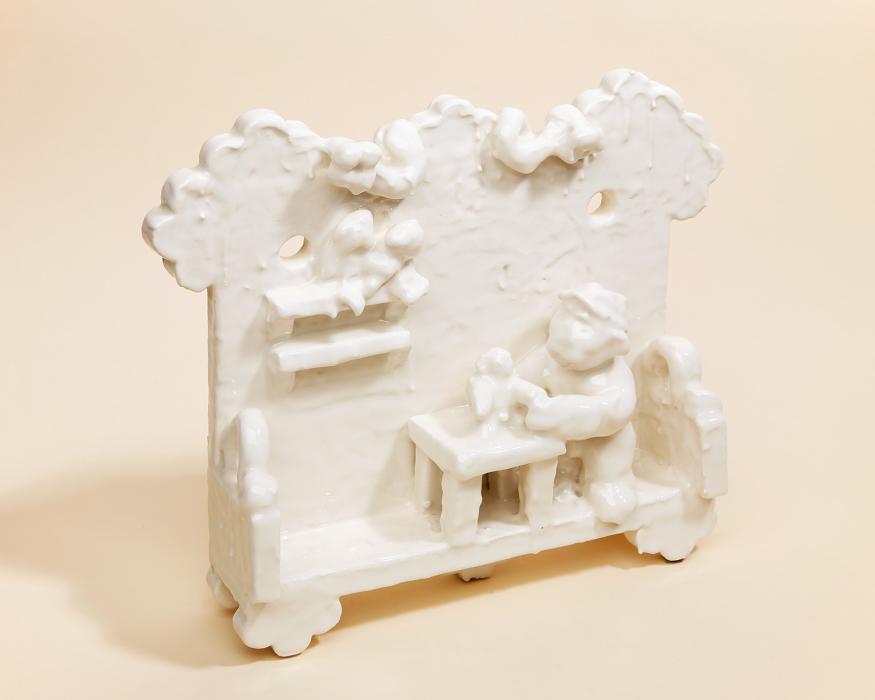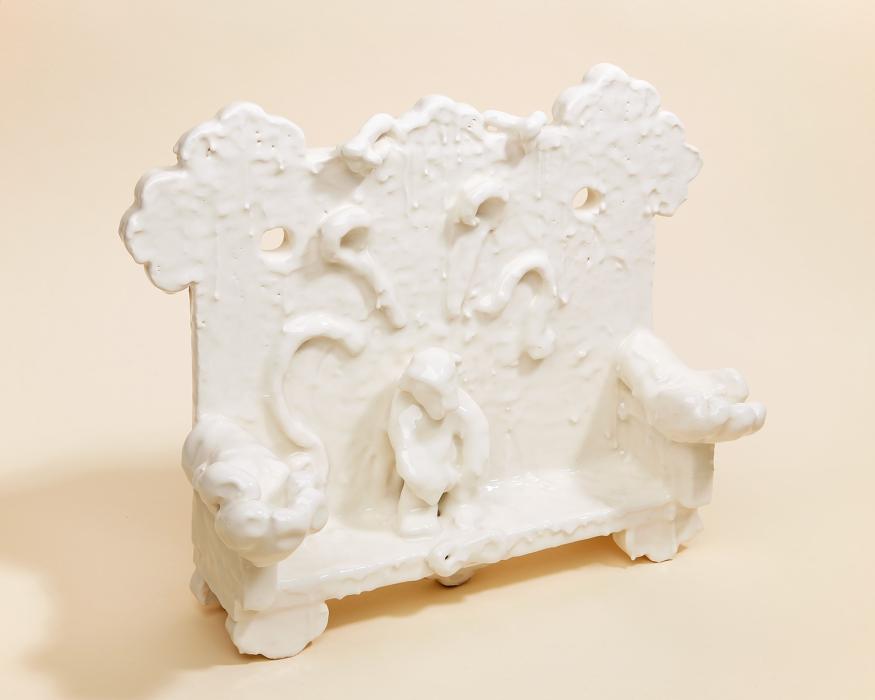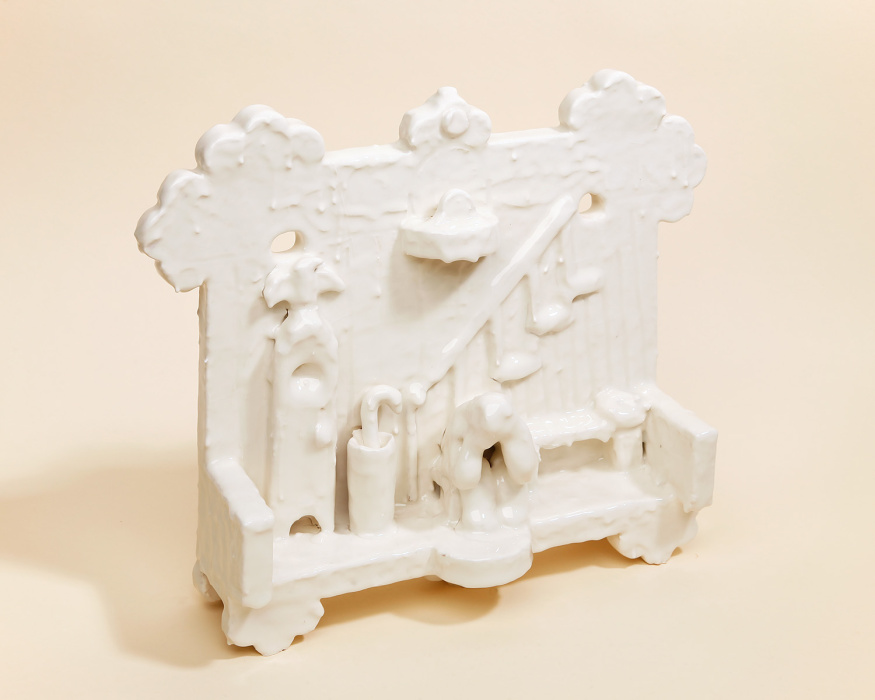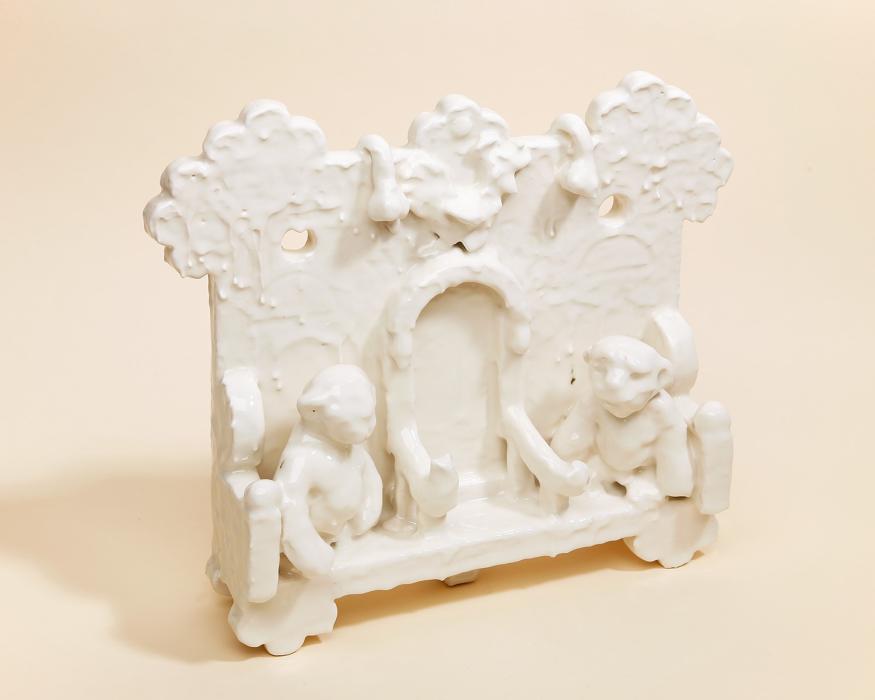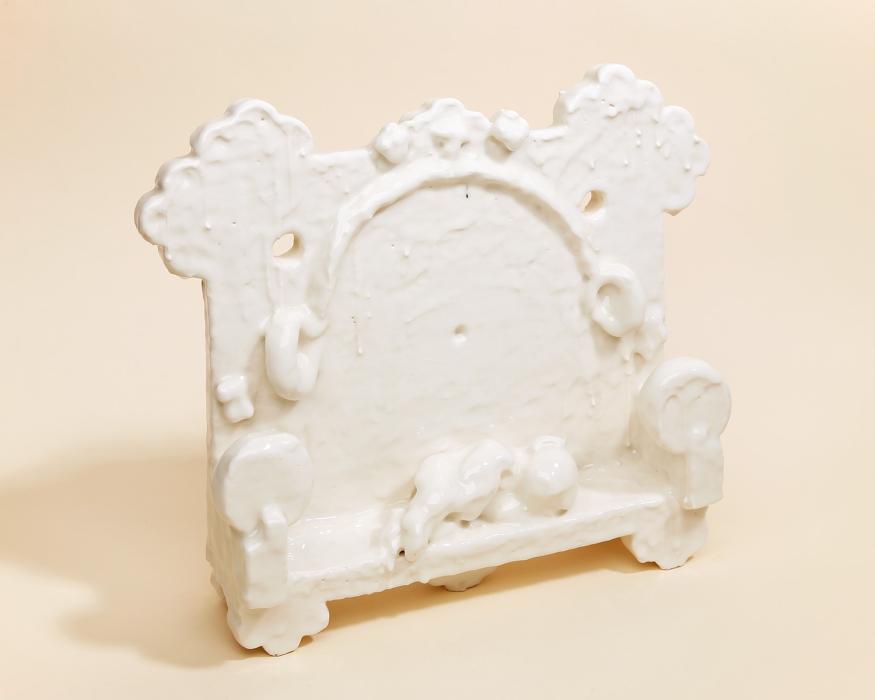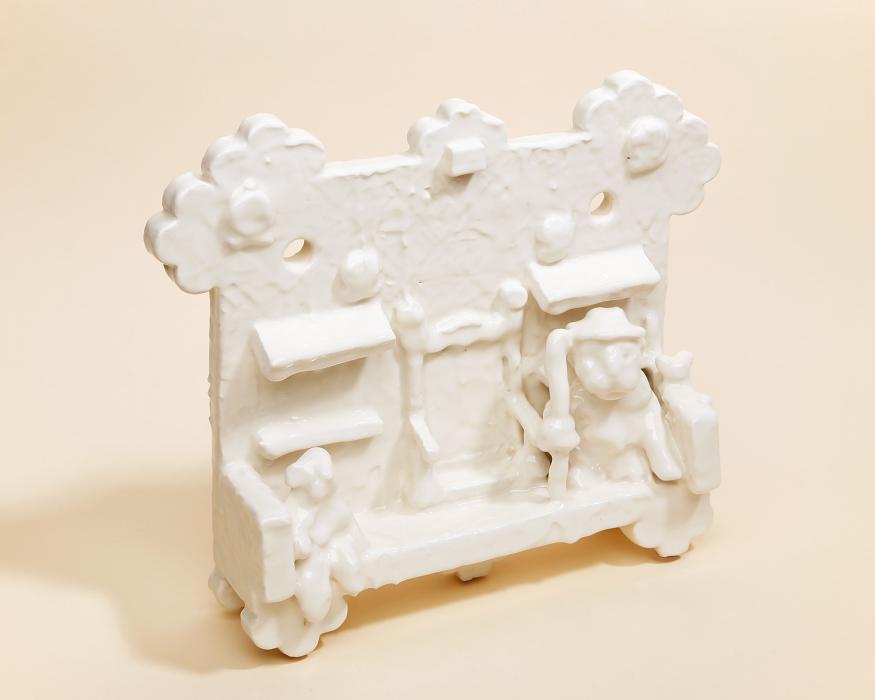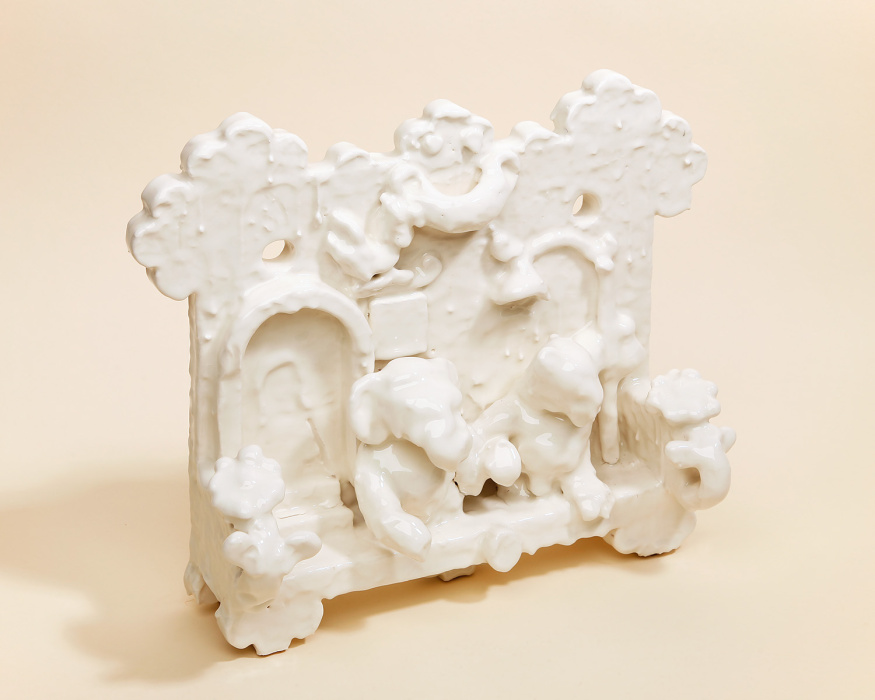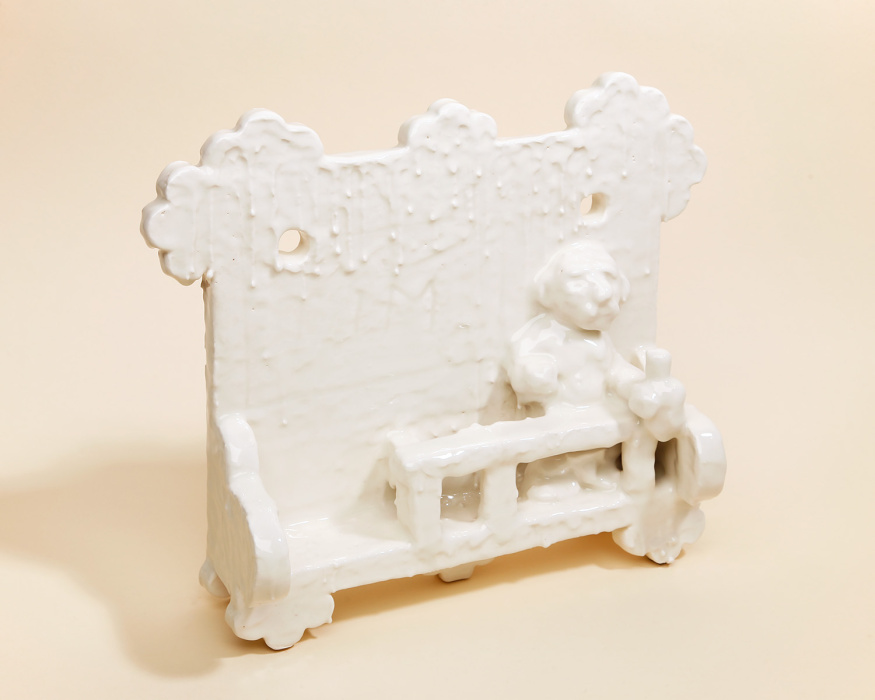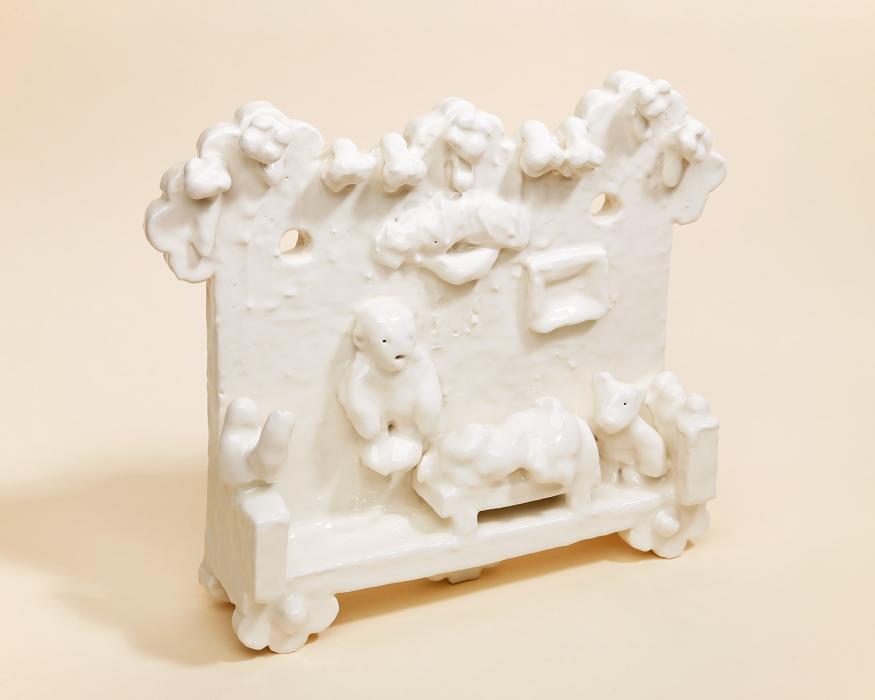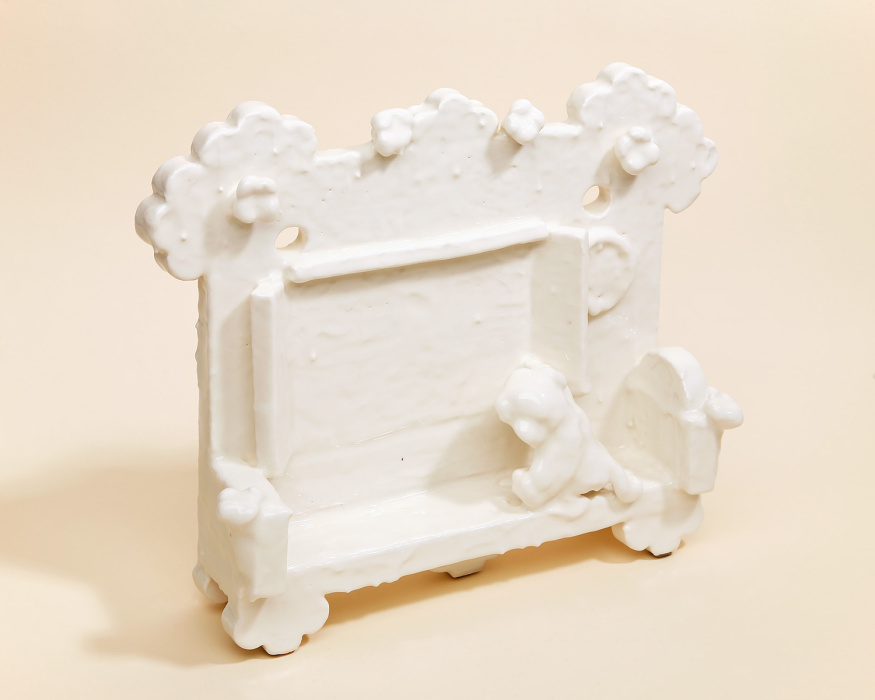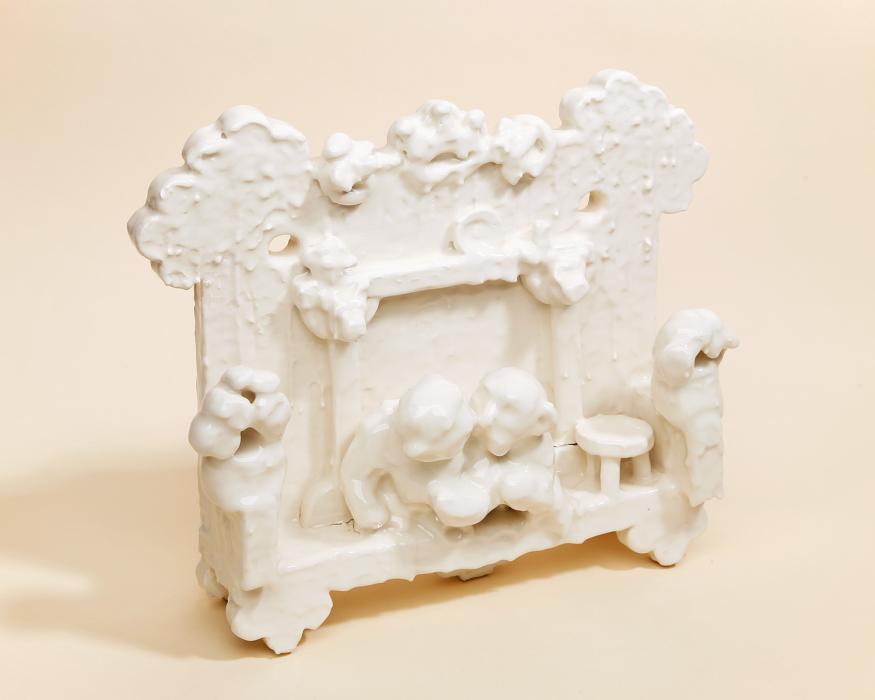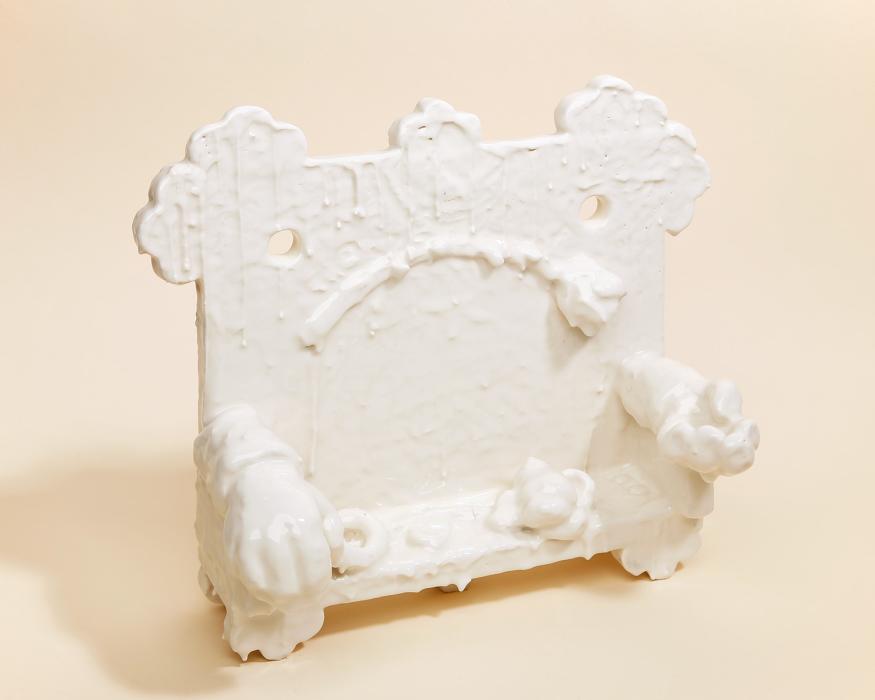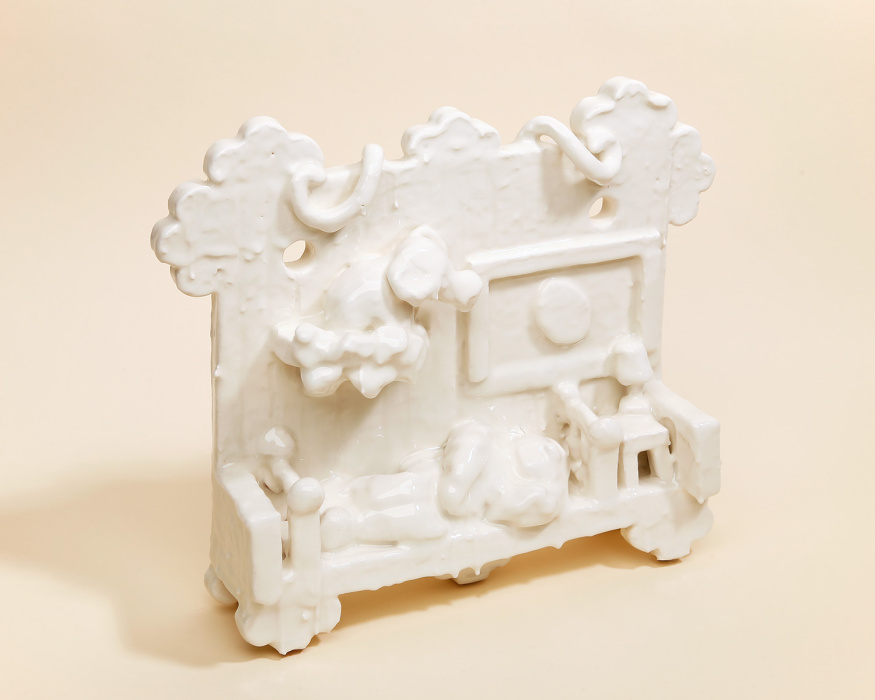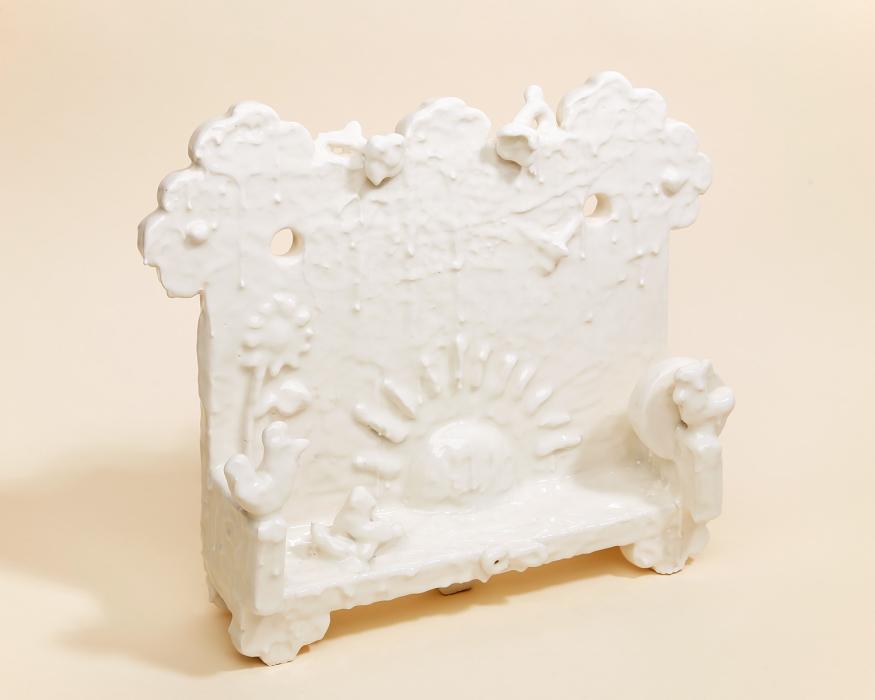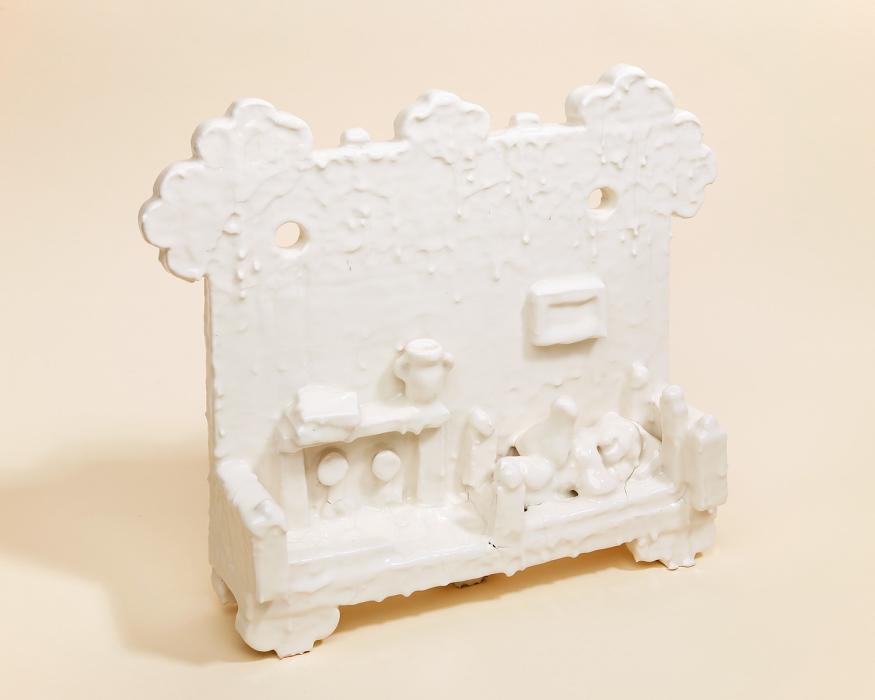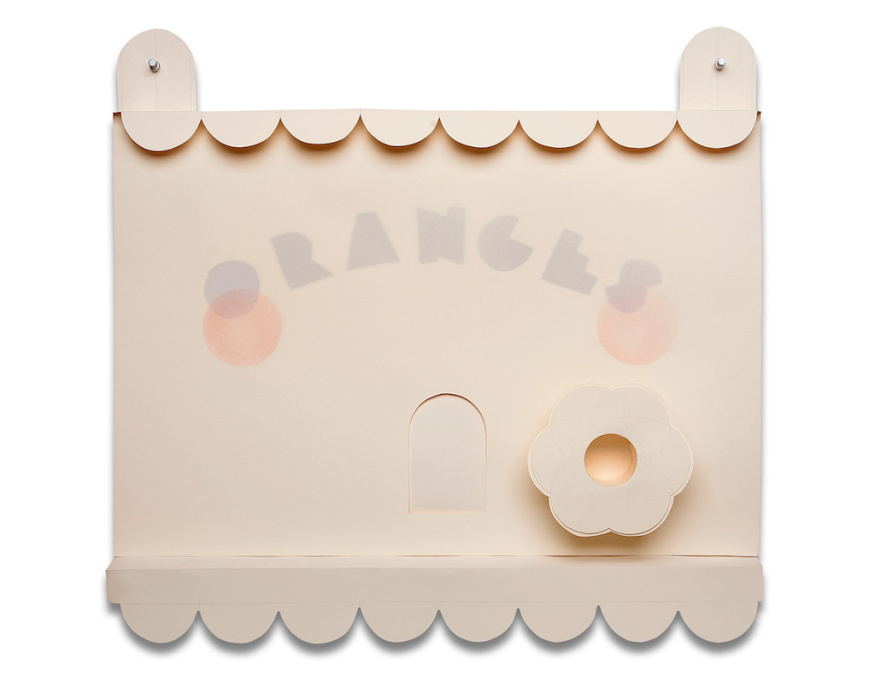This body of work revives a structure that I’ve used a lot, ever since I made a diorama in kindergarten. It is the sphinx, the stage. It is a mask and a face with hands. It is like a clock, mute but for the dramas it holds and projects outward. It is a mounted trophy like a tiger or bear skin rug: once it lived on an animal, walking, and now it hangs on the wall. It is a body suspended on spikes to be stared at or into in a kind of face off.
For this exhibition, the structure/form is expressed first in clay, and then in paper. The ceramic works mimic Korean Buncheong ware, and are terra cotta coated in many layers of drippy slip. For me, they have a very real, deep pathos. Through numerous revisions, diurnal and nocturnal moments are drawn in and erased with slip, and then covered in a thick, milky glaze that gives the feeling of clotted cream.
These pieces take their inspiration from myriad references, including a Book of Hours, children’s books and television shows, and art history (Ghiberti’s Baptistry Doors, for example). The room depicted in Goodnight Moon, the character Chairry from Pee Wee’s Playhouse (the face that receives and holds), or Emil Nolde’s Unpainted Picture seascapes: all recall the phenomenology of place and thing, especially in the power an illustration or object has to put me in a certain present moment.
There are scenes of waking up. La Toilette is a literal moment of reflection, and The Thorn Puller reminds me of Louis C.K. saying that putting on his socks is the hardest thing he does all day.
There are drinking scenes. The Cock is a dirty bar. Painted flat black, time stands still there in a perpetual midnight. The Time Bank is where I take out time loans - literally borrowing time from the future. Sometimes these places feel shameful, but they still hold a lot of pull.
There is a birthday scene and a skeleton laid in his tomb.
There are a lot of sleeping scenes, and references to what happens during that time. Images of dreams mix with astral and ancestral visitors, again recalling Buncheong ceramics.
And this structure is really like a fireplace. My ideal fireplace is like the one in Whistler’s Peacock Room with its sunflower andirons. The fire, the site of time and the consumption of wood creating light and warmth, also offers up a timeless trance for staring and dreaming.
The paper pieces are called posters to indicate a purpose, a value, and a relationship to calendar time. These too take the form of an animal skin. Like vellum, once it lived on an animal, now it holds patterns and words/poems. Recalling Hercules’ lion skin, a bear skin rug, and those wonderful Tibetan tiger skin rugs, the posters’ patterns are inspired by Giacomo Balla’s Iridescent paintings and Varvara Stepanova’s surface designs. The words are at once color names and the names of fruits and flowers. They almost never conform with their own color (the color they are painted in). This dissonance creates elusive feelings and associations. They are a loose interpretation of Kukai’s Iroha poem (“Colors are fragrant but they will eventually scatter.”). The paper pieces are prettier and more vulnerable, but both sets of work are about the different modes and speeds of time. There are different speeds of making, different speeds of existing. The images speak to human lifetimes: childhood to old age, the time of celestial orbits, seasons, night and day.
